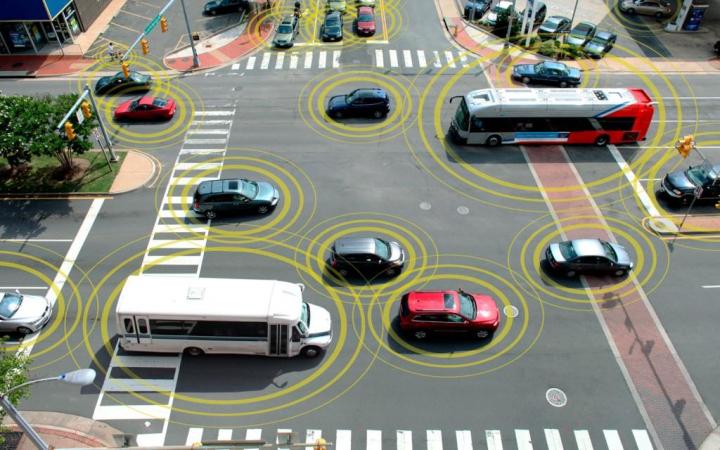
The agency released an advanced notice of proposed rule making, announcing its intention to regulate the technology, which is a first step toward putting it on cars you’ll actually be able to buy.
V2V-equipped cars can’t drive themselves, but they can “talk” to each other, giving drivers a greater awareness of potential obstacles and, researchers hope, preventing many accidents.
This is accomplished by harnessing the many sensors and cameras already available in some new cars to a Wi-Fi-like communication system that would allow vehicles to send information on speed, position, and other factors back and forth.
The NHTSA has been conducting research, including a massive test involving around 3,000 cars on public roads in and around Ann Arbor, Michigan. So far, officials are liking the results.
Related: Will a V2V mandate make driving safer?
The agency is focusing on two systems – Left Turn Assist (LTA) and Intersection Movement Assist (IMA) – that warn drivers of potential collisions in four-way intersections. It believes they could prevent up to 529,000 crashes and save 1,083 lives per year.
Both LTA and IMA would overcome blind spots, giving drivers an earlier warning of a car running a red light, or preventing a car from making a left turn if oncoming traffic is sensed.
The NHTSA describes the technology as “ready to implement,” and will seek public comment on its rule making proposal. However, it may be some time before V2V achieves widespread use.
Like self-driving cars, it will probably be up to state and local governments to actually regulate V2V, and carmakers will also have to figure out how to integrate it into their vehicles affordably.
It may be even longer before V2V has a significant affect on crash rates, as it will need to reach a critical mass of adoption. The more cars in the network, the more comprehensive the coverage.


